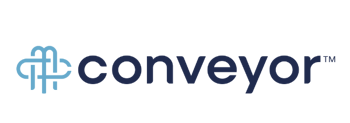Account-based selling is not a new strategy by any means. Traditionally, sales organizations develop lists of target accounts they are attempting to win as new business. Why? Because it makes perfect sense for salespeople to focus their efforts on their highest-value prospects.
Account-based marketing, however, is a rapidly growing modern approach to business growth – and has quickly become a go-to technique for a variety of reasons.
- First, for a business to truly thrive, Sales and Marketing must be aligned, using the same data and speaking the same language. If a sales team is deploying an account-based selling strategy, their marketing counterparts should be providing support to achieve related goals.
- Second, there are so many reports out there that suggest customized messaging is more effective at moving a prospect through the sales funnel. Regardless of the tactics used, ABM involves leveraging content specifically tailored to the needs of the target accounts.
- Finally, while relatively expensive and challenging to implement at scale, tools and technology built out expressly for ABM strategies have accelerated its adoption by large and small teams alike.
For those of you who are interested in account-based marketing but are not super familiar with how to go about it, HubSpot’s Ultimate Guide to Account-Based Marketing: 6 Key Steps is a great place to start. This article digs into the third essential step in the process: content creation.
One of the most challenging parts of account-based marketing is creating content that speaks to your highly specific audience. While we ALWAYS want our content to have an intended target, narrowing the messaging down to the individual persona within the specific company requires thoughtful research and planning. Read on to learn how to get started!
Content Creation for Account-Based Marketing Campaigns
Content creation for ABM is all about personalization. Assuming you have limited resources, not every targeted account can or should warrant the same level of customization. Categorize your targeted accounts by priority level: high, medium, and low. Then, based on your resources and timeline, place them on the spectrum below to guide your efforts.

[Graphic courtesy of Engagio]
High Priority Accounts
Your high-priority accounts are going to be the beneficiaries of the most customization your team can provide, living on the above spectrum anywhere in or to the left of the “highly customized” segment. A robust technology stack is going to make some of this customization easier. For example, the HubSpot platform allows you to set up smart CTAs and smart content, enabling you to customize web content based on account list and persona list membership. In a nutshell, smart content leverages cookies in order to display more personalized messages or imagery based on the information you have about the respective website visitor – and can be a super targeted and reasonably easy way to personalize the buyer’s journey.
Next, it’s important to create premium content that specifically addresses the pain points and business goals of your target accounts. Your current portfolio is going to dictate the work involved in this process. After conducting a thorough content audit, highlight any existing guides, white papers, videos, etc. that can be used as a starting point. From there, consider how that content can be further adapted for your audience.
Your content audit will also help you identify holes that need to be filled to meet the needs of these high-priority accounts and personas. You may end up creating multiple versions of a single piece of content to fill this requirement. Alternatively, you may need several completely different pieces of content. Just be sure you have a piece of content geared to each target group for every stage of the buyer’s journey.
Medium Priority Accounts
Medium priority accounts still require customization, but you don’t need to go as deep. While the use of smart content is recommended, what you display to a returning visitor may only showcase content created for a prospect who works in a particular industry or job role (as opposed to targeting a specific account). You will still need customized content, but there may be fewer versions or lighter customization involved.
For example, a mobile app development company might already have a digital resource available for download called 10 Ways a Mobile App Will Benefit Your Business. If this company began targeting accounts in a niche industry, like medical device manufacturing or independent restaurants, this guide could be revised and renamed to call out how mobile solutions can change the game for those types of businesses. Strategy and depth will depend on your resources and time frame. Of course, a map and solid plan will be vital to your marketing success.
Low Priority Accounts
Low priority accounts will use content that is relevant, but mapping various pieces of content to each stage in the buyer’s journey may be sufficient. You might already have a variety of blog posts, web pages, premium content, and outside resources that your company uses to educate your prospects and drive them through the sales cycle. By strategically assigning a piece of marketing collateral or two to nurturing contacts at the top, middle, and bottom of your funnel, you should still be able to engage a number of these accounts. Simple tools like personalization tokens will make these prospects feel special!
Extra ABM Content Creation Tips
Remember, Rome wasn’t built in a day – so don’t get overwhelmed by the content creation process! Assess your priorities, layout a plan for those at the top, and get to work. For instance, you may decide to go after your top 5 accounts and test out your strategy. A quick-win version of your project may look like this:
- Customize your top 10 most visited website pages with personalization tokens that leverage the information you have about those companies in your CRM or database.
- Customize your primary lead nurturing collateral to speak to those companies' specific goals.
- Tailor your best-performing downloadable piece of content to address the common needs of these accounts.
PMG views account-based marketing and inbound marketing as complements to one another. Educational and user-specific content is at the core of our marketing hub. Content creation for ABM takes it further, urging marketing and sales to maximize usage to their advantage.
Need further assistance with a content strategy for your ABM efforts? We are happy to lend a hand. Reach out any time!




